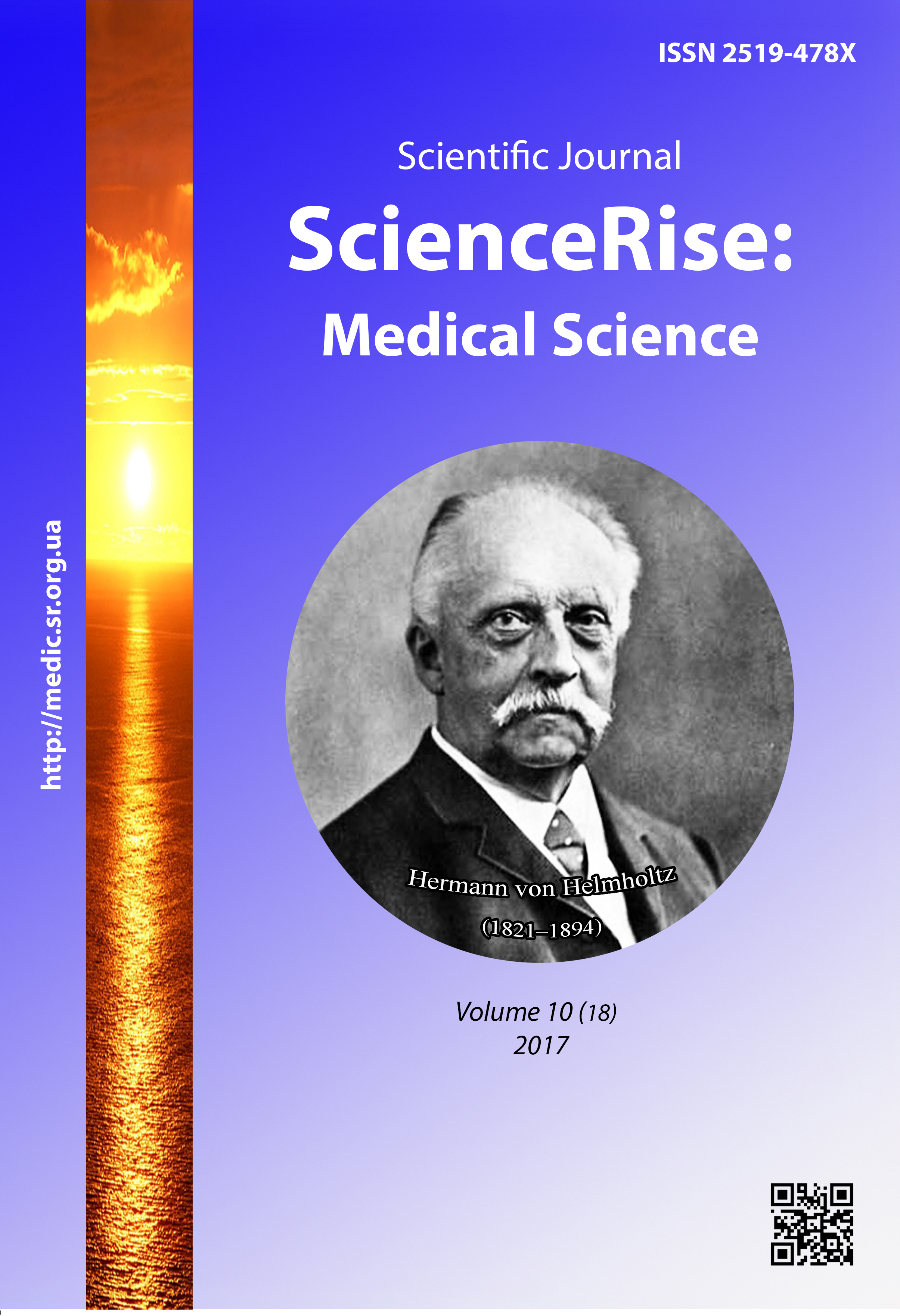Prognosos of HIV-infection progression and the search for the predictors of aids and pulmonary tuberculosis development
DOI:
https://doi.org/10.15587/2519-4798.2017.113319Keywords:
HIV-infection, prognostication, AIDS, pulmonary tuberculosis, predictors, infection duration, СD4 lymphocytesAbstract
HIV-infection is the most urgent problem of health protection because of the high morbidity level, polymorphism of clinical manifestations, high risk of the unfavorable results development and significant economic losses, caused by the prevalence of persons of working age among infected people. But factors that favor the pulmonary tuberculosis development in HIV-infected patients remain unexplained and need separate studies.
Aim of the research – to increase the prognostication of HIV-infection course based on determining predictors of progression to AIDS stage and pulmonary tuberculosis development.
Materials and methods. The retrospective cohort analysis of 1498 HIV-infected patients, among which 491 had IV clinical stage of HIV-infection during the observation period (2003–2015, was realized. The statistical analysis was realized using Cox regression.
Results of the research. At the analysis of predictors of HIV-infection progression to ІV clinical stage the binary analysis revealed five important ones: male sex (HR=0,644, 95 %CI [0,518-0,800], р=0,000), patients’ age (HR=1,016, 95 %CI [1,002-1,029], р=0,022), infection duration >3 years (HR=1,252, 95 %CI [1,200-1,306], р=0,000), initial level of СD4 lymphocytes less than 350 cells/mcl (HR=0,997, 95 %CI [0,996-0,998], р=0,000) and parenteral way of HIV transmission (HR=1,478, 95 %CI [1,090-2,004], р=0,012). The multiple analysis of Cox proportional intensities determined independent predictors of HIV-infection progression to ІV clinical stage as: male sex (HR=0,627, р=0,000), infection duration >3 years (HR=1,222, р=0,000), parenteral way of HIV-infection transmission (HR=0,627, р=0,000), and primary level of СD4 lymphocytes < 350 cells/mcl (HR=0,997, р=0,000). The independent predictors of the pulmonary tuberculosis development in HIV-infected patients were determined as: male sex (HR=0,517, р=0,000), presence of VHC-co-infection (HR=0,433, р=0,000) and HIV-infection duration > 3 years (HR=1,177, р=0,000).
Conclusions:
1. The independent predictors of HIV-infection progression to ІV clinical stage as: male sex infection duration >3 years parenteral way of HIV-infection transmission and primary level of СD4 lymphocytes < 350 cells/mcl.
2. The independent predictors of the pulmonary tuberculosis development in HIV-infected patients were determined as: male sex presence of VHC-co-infection and HIV-infection duration > 3 years
References
- VIL-infektsiia v Ukraini. Informatsiynyi biuleten No. 47 (2017). Kyiv, 148.
- Poshyrennia VIL-infektsyi/SNID v Ukraini. Derzhavna sluzhba Ukrainy z pytan protydiy VIL-infektsyi/SNIDu ta inshykh sotsialno nebezpechnykh zakhvoriuvan. Available at: http://dssz.gov.ua/index.php/operatyvna-informaciya/publikacii/428-2009-01-08-12-50-08
- Dabrowska, M. M., Pogorzelska, J., Parfieniuk, A., Siwak, E., Wiercińska-Drapało, A. (2007). Tuberculosis and HIV infection-main diagnostic and therapeutic problems. Pol. Merkur. Lekarski, 23 (135), 212–214.
- Meintjes, G., Rabie, H., Wilkinson, R. J., Cotton, M. F. (2009). Tuberculosis-associated Immune Reconstitution Inflammatory Syndrome and Unmasking of Tuberculosis by Antiretroviral Therapy. Clinics in Chest Medicine, 30 (4), 797–810. doi: 10.1016/j.ccm.2009.08.013
- Phillips, A., Baker, J., Lundgren, J. (2013). Are antiretrovirals enough for people living with HIV? The Lancet, 382 (9903), 1466–1467. doi: 10.1016/s0140-6736(13)62072-3
- Deeks, S. G., Lewin, S. R., Havlir, D. V. (2013). The end of AIDS: HIV infection as a chronic disease. The Lancet, 382 (9903), 1525–1533. doi: 10.1016/s0140-6736(13)61809-7
- Friedland, G. (2010). Infectious Disease Comorbidities Adversely Affecting Substance Users With HIV: Hepatitis C and Tuberculosis. JAIDS Journal of Acquired Immune Deficiency Syndromes, 55, S37–S42. doi: 10.1097/qai.0b013e3181f9c0b6
- Buchacz, K., Lau, B., Jing, Y., Bosch, R., Abraham, A. G., Gill, M. J. et. al. (2016). Incidence of AIDS-Defining Opportunistic Infections in a Multicohort Analysis of HIV-infected Persons in the United States and Canada, 2000–2010. Journal of Infectious Diseases, 214 (6), 862–872. doi: 10.1093/infdis/jiw085
- Klinichnyi protokol antyretrovirusnoi terapyi VIL-infektsyi u doroslykh i pdlitkiv (2010). MOZ Ukrainy, No. 551.
- Joint United Nations Programme on HIV/AIDS (2016). Geneva: UNAIDS, 13. doi: 10.4135/9781412963855.n665
Downloads
Published
How to Cite
Issue
Section
License
Copyright (c) 2017 Tetiana Koval, Galyna Dubynska

This work is licensed under a Creative Commons Attribution 4.0 International License.
Our journal abides by the Creative Commons CC BY copyright rights and permissions for open access journals.
Authors, who are published in this journal, agree to the following conditions:
1. The authors reserve the right to authorship of the work and pass the first publication right of this work to the journal under the terms of a Creative Commons CC BY, which allows others to freely distribute the published research with the obligatory reference to the authors of the original work and the first publication of the work in this journal.
2. The authors have the right to conclude separate supplement agreements that relate to non-exclusive work distribution in the form in which it has been published by the journal (for example, to upload the work to the online storage of the journal or publish it as part of a monograph), provided that the reference to the first publication of the work in this journal is included.









